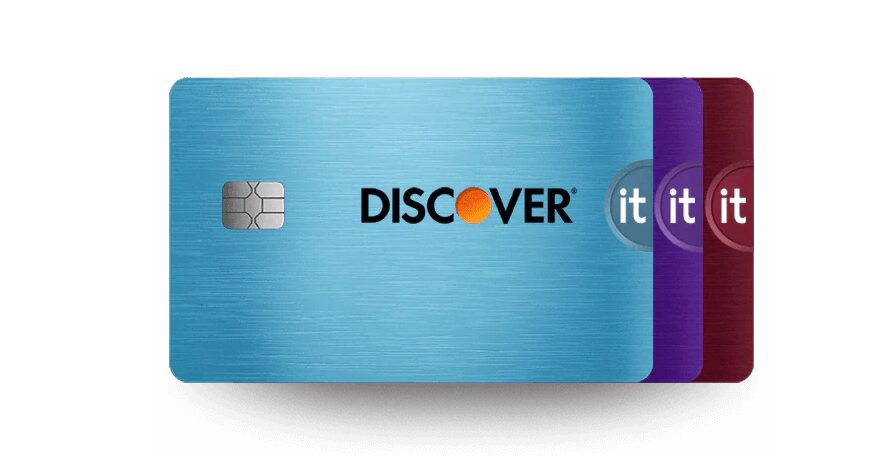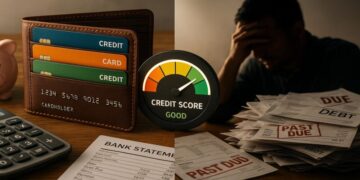Strategies for Using Personal Loans in Debt Consolidation

Understanding the Power of Personal Loans
Feeling overwhelmed by debt can be a heartbreaking experience. These feelings of uncertainty and helplessness are common, but the good news is that there are solutions available. Personal loans can be a powerful tool in your debt management arsenal. They offer you a fresh start by allowing you to consolidate your existing debts into a single, more manageable payment.
One of the most attractive aspects of personal loans is the potential for lower interest rates. Many credit cards charge interest rates that can soar above 20%, making it difficult to pay down the principal. In contrast, personal loans often come with interest rates that are far more favorable, sometimes as low as 6%-12%, depending on your credit score and the lender. This significant difference means that by consolidating your debts, you might save hundreds or even thousands of dollars over time.
Simplifying Your Financial Life
Another advantage of personal loans is the benefit of fixed monthly payments. Most personal loans come with a fixed repayment period, which means you’ll know exactly how much you owe each month and when the loan will be paid off. This clarity makes budgeting more straightforward; you can allocate your finances with confidence, which can alleviate some stress in your life.
Moreover, consolidating your debt with a personal loan can also lead to an improved credit score. When you pay off credit card balances, your credit utilization ratio decreases. This is the ratio of your total credit card balances to your total credit limits, and a lower ratio can positively influence your credit score. A better credit score opens up future opportunities for lower interest rates on mortgages or car loans, which can additionally enhance your financial well-being.
Careful Consideration is Key
However, while personal loans can be a lifeline, they require careful consideration and planning. It’s critical to assess your financial situation honestly. Before applying, take the time to create a budget that reflects your income and expenses. Know how much debt you have, the interest rates associated with each loan, and ensure that taking out a personal loan aligns with your long-term financial goals.
As you embark on this journey towards financial clarity, remember that each step you take—each informed decision—brings you closer to a brighter financial future. Educating yourself about the options available empowers you to take control of your financial destiny. Explore the potential that personal loans hold, and embrace the freedom that comes with a simplified financial life. With dedication and a clear strategy, you can transform your current struggles into manageable steps toward financial empowerment.
Crafting Your Debt Consolidation Strategy
Embarking on a journey to financial recovery can seem daunting, but with a well-thought-out debt consolidation strategy, you can transform your financial situation and pave the way toward a brighter future. It all begins with a clear understanding of your financial landscape, which will enable you to make informed decisions tailored to your specific needs. Here, we explore essential strategies that can guide you through this process and set you on the path to financial stability.
1. Assess Your Total Debt
Knowledge is power when it comes to debt management. Start by gathering all your financial statements to get a clear picture of your total debt. This includes credit cards, student loans, medical bills, car loans, and any other liabilities. For instance, if you have three credit cards with balances of $2,500, $1,200, and $800, as well as a personal loan of $5,000, your total debt is a staggering $10,500. Understanding this figure serves as a vital starting point—it not only informs how much you need to borrow for consolidation but also helps to set achievable financial goals.
2. Compare Interest Rates
Now that you’ve assessed your debt, it’s time to explore personal loan options that can help consolidate it. Different lenders often provide a range of interest rates, depending on factors such as your credit history, income level, and repayment timeline. To make the most of your situation, compare at least three to five loan offers from various institutions. Pay particular attention to the following:
- Interest Rates: Strive for the lowest available rates. For instance, if one lender offers 6% and another offers 12%, the difference can save you significant money over the loan’s lifespan.
- Loan Terms: Understand the duration of the loan and associated fees. A longer term may come with lower monthly payments, but it might result in paying more interest over time.
- Monthly Payments: Ensure the monthly payment aligns with your budget. Ideally, it should free up your finances without stretching your resources too thin.
3. Create a Repayment Plan
A thoughtful repayment plan is vital for sustainable financial health. Begin by determining how long you plan to take to repay the personal loan and how much you can allocate each month towards those payments. Your plan should include:
- Your Income: Analyze your monthly net income and ensure that the payment fits comfortably within it. If your income is $3,000 a month, a guideline would be to keep your loan payments at or below 15-20% of your monthly income.
- Your Expenses: Review your budget critically and look for areas where you can cut back. This could mean dining out less frequently or finding alternatives for daily expenses, directing those funds toward your debt instead.
- An Emergency Fund: As you focus on debt repayment, it’s equally important to set aside money for emergencies. This creates a safety net that helps prevent the accumulation of new debt due to unforeseen expenses.
By implementing these strategies, you can not only simplify your debt but also build a solid foundation for your financial future. Remember that consolidating your debt isn’t just about making payments easier; it’s about regaining control over your financial situation. This empowers you to focus on wealth-building and financial independence rather than being overwhelmed by debt. Embrace the potential for a brighter tomorrow, knowing that the diligent financial decisions you make today will set the stage for your success and peace of mind in the future.
Implementing Effective Debt Management Techniques
As you gear up to take action with your personal loan for debt consolidation, it’s crucial to intertwine your borrowing strategy with effective debt management techniques. By using your loan wisely and adopting responsible practices, you position yourself not just for immediate relief but also for sustained financial wellness. Here are some powerful strategies that can help streamline your approach.
1. Avoid Further Accumulation of Debt
One of the most significant oversights during a debt consolidation process is the tendency to accumulate new debts. Once you obtain that personal loan, avoid the temptation to rely on credit cards or additional loans to cover expenses. Instead, focus on cultivating healthy spending habits. Establish a strict budget that emphasizes living within your means. If emergencies arise, redirect any surplus from your budget or savings to deal with unexpected costs without resorting to credit. This discipline not only aids in repayment but enhances your financial resilience.
2. Leverage Automatic Payments for Savings
Honor your commitment to repayment and take advantage of automatic payment setups. By scheduling your payments to be automatically deducted from your checking account, you eliminate the risk of missing due dates, thus avoiding costly late fees and potential damage to your credit score. Furthermore, many lenders offer a discount on interest rates for clients who opt for automatic payments. This small step can lead to substantial savings over time—making your consolidation efforts even more effective.
3. Monitor Progress Regularly
As you work to pay down your consolidated debt, make it a habit to monitor your progress diligently. Set monthly check-ins to review your budget, expenses, and the outstanding balance of your personal loan. Celebrate small victories; every payment you make is one step closer to financial freedom. Use tracking apps or spreadsheets to visualize your progress, ensuring accountability and motivation as you witness your debt dwindling.
4. Reassess Your Financial Goals
During the consolidation process, take time to reassess your broader financial goals. This includes considering future plans such as purchasing a home, funding education, or planning for retirement. Align your debt repayment strategy with these goals, effectively prioritizing which debts to pay down faster. For instance, if your interest on a credit card is significantly higher than your personal loan, it may be worth allocating extra funds toward that credit card to minimize your overall interest costs. This past knowledge facilitates informed decision-making and keeps you on a clear path to your aspirations.
5. Seek Financial Counseling if Needed
Sometimes, despite our best efforts, financial challenges can feel overwhelming. If you find yourself struggling to maintain a grip on your debt, consider seeking guidance from a credit counseling service. These organizations can provide valuable insights and strategies tailored to your unique situation. Skilled counselors can assist with budgeting, negotiating repayment plans, and understanding your rights as a borrower, empowering you to regain control over your finances.
Incorporating these techniques alongside your personal loan strategy not only enhances the efficacy of your debt consolidation efforts but also fosters a healthier financial mindset. By approaching your loan with intention and responsibility, you lay the foundation for a future where you thrive, free from the shackles of debt. Each deliberate choice reinforces your financial discipline and creates opportunities for growth—an inspiring journey towards a life unencumbered by financial stress.
Conclusion
In navigating the complexities of debt management, utilizing a personal loan for debt consolidation can be a transformative strategy that leads to renewed financial stability. By merging multiple debts into a single, manageable loan, you not only simplify your repayment process but also position yourself for potential savings through lower interest rates. However, the journey doesn’t end with obtaining the loan; it requires a commitment to responsible financial behavior and proactive debt management.
Remember the importance of avoiding new debt accumulation and adhering to a strict budget. Consistently monitoring your progress can keep you motivated and on track. By automating payments, you not only safeguard against late fees but may also unlock additional savings from your lender. When you periodically reassess your financial goals, you stay aligned with your aspirations and remain vigilant about your repayment priorities.
Lastly, if challenges arise, seeking help from a credit counseling service is a wise choice. These professionals can guide you through your financial landscape and equip you with strategies tailored to your circumstances. Embrace your journey towards a debt-free life with optimism and determination. Each step taken is a testament to your dedication to financial health, promising a future where you can thrive rather than merely survive. You possess the power to reclaim control over your finances and foster a prosperous life free from the burdens of debt.
Related posts:
Comparison of digital credit cards in the United States
How to Use Personal Loans to Invest in Education and Professional Development
The Comprehensive Guide to Getting an Oportun Personal Loan
How to Improve Your Credit Before Applying for a Personal Loan
Ideal Low-Risk Investments for Brazilians in the USA
The Pros and Cons of Personal Loans: What You Need to Know

Beatriz Johnson is a seasoned financial analyst and writer with a passion for simplifying the complexities of economics and finance. With over a decade of experience in the industry, she specializes in topics like personal finance, investment strategies, and global economic trends. Through her work on Web Dinheiro, Beatriz empowers readers to make informed financial decisions and stay ahead in the ever-changing economic landscape.







